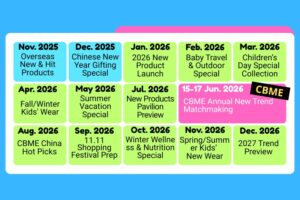Rational, wise, cautious, and focused on cost-performance and value — Post-95 parents are reshaping the landscape of maternity and baby consumption with a firm set of spending principles rooted in purposeful consumption.
Gone are the days of reckless consumerism. As young families move from impulsive to intelligent spending, brands and channels feel the shift — this generation of Post-95 parents appears to possess lower spending desire, yet much higher standards and purpose.
Economic Uncertainty Spurs Purposeful Consumption
As 2024 draws to a close, a new wave of consumer behavior is emerging. According to Nielsen IQ’s Path to 2025: Global Consumer Outlook, spending continues to shift toward essentials. Dining out, outdoor entertainment, and takeaway food are being cut back, while purposeful consumption — particularly around home, parenting, and social bonding — remains consistent and strong.
From household to maternity and baby consumption, families now carefully weigh alternatives, compare prices, and shop with value in mind. At the center of this shift are Post-95 parents, whose purchasing decisions are driven more by product experience, safety, and relevance than by big brand names.
Related Article: How to Find a Breakthrough Point in the Game of Existing Resources in 2025?

Focusing on the maternity and baby industry, purpose-driven consumer goods generally have two main characteristics:
First, they lean towards practicality, solving daily necessities in a planned way rather than pursuing “what might be needed in the future,” instead fulfilling “what is just needed now.”
In the maternity and baby consumption sector, purposeful consumption is evident in every aspect — from baby food to diapers. The goal is clear: solve real, immediate needs, not hypothetical ones.
Take baby food as an example. Beyond standard milk powder, niche offerings tailored for specific dietary or situational needs are thriving. From January to September 2024, according to Magic Mirror Insights, growth in maternity and baby consumption categories like special formula milk, infant liquid milk, and cow’s milk powder reached up to 25.1%, reflecting demand from Post-95 parents who are attentive to allergies, intolerance, and convenience for travel scenarios.
In the diaper market, purposeful consumption is even more concentrated. Diapers, as high-frequency essentials, are often stockpiled methodically by young families. With lower brand loyalty and high price sensitivity, especially during events like 618 and Double 11, this segment reflects a highly planned buying mindset. According to Chanjuan Data, baby diaper sales on Douyin grew by 24.79% year-over-year during the 618 promotion — another strong indicator of strategic maternity and baby consumption.
Purposeful consumption doesn’t mean buying the cheapest or the trendiest — it means evaluating long-term utility and emotional value. Today’s Post-95 parents are sophisticated buyers: they demand functionality, durability, and meaningful benefits in every maternity and baby product they purchase.
Insights from the “2024 Maternity and Baby Consumption Future Trends Report” by Digital 100 show that 30% of mothers focus on ingredients when purchasing, especially in milk powder and nutritional products. This signals a deepened sense of purposeful consumption, where even toiletries and travel gear are chosen for targeted functionality, not general multitasking.
Related Article: 2025 NielsenIQ China Retail Report: 3 Offline Growth Breakthroughs
Post-95 Parents Redefine Quality in Maternity and Baby Consumption
The evolution of maternity and baby consumption habits among Post-95 parents shows a shift toward quality and function-first decision-making. When it comes to high-involvement products like strollers and car seats, Post-95 parentsdisplay a stronger willingness to invest in premium brands — as long as the value and experience align with their purposeful consumption standards.
This emerging generation sees product quality and thoughtful design as necessary, not optional — a major cue for brands in the maternity and baby space looking to connect meaningfully with their audience.
Related Article: Douyin Marketing Strategies 2025: How Maternity Brands Are Breaking Through
Maternity and Baby Consumption Thrives Amid Economic Headwinds
Despite broader economic slowdowns, weak markets, and consumption downgrades, maternity and baby consumptionremains resilient — in large part due to the rise of purposeful consumption among Post-95 parents. Even under financial pressure, families continue prioritizing investments in their children.
In this era of intentional spending, purposeful consumption has become a guiding principle for the new generation of parents. And it’s this mindset that offers stability and opportunity to the entire maternity and baby industry.
The following article was originally published by Maternal and Baby Industry Observation



